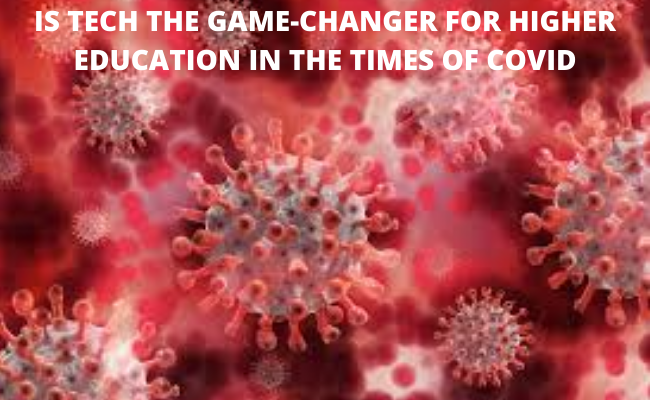The entire world is geared-up together in the fight against the Coronavirus pandemic. As per the latest reports by the WHO, as of now, 114 potential treatment drugs are in consideration and 79 potential vaccines in development and hundreds of clinical trials going on.
But despite the war-scale efforts of all countries, it might take up to a couple of years for the situation to return to normal across all sectors of the economy, including higher education.
Technology-enabled online learning is becoming extremely popular with educational institutions. This latest blend of the physical and digital realm of learning has emerged as a strategic opportunity for the institutions around the globe as they have been somewhat forced to entirely shift their modes of operation and communication to online channels.
While the higher education institutions are adopting digital learning but are tech really the game-changer? Can it replace the experience of classroom learning? Are the time and effort being dedicated to developing e-learning platforms worth the effort?
Well, the answer lies in the way in which these institutions will take up the latest technology while maintaining the quality of the learning experience and the quality of the content for the learners.
The experience of digital learning
In order for e-learning to be efficient, it must manage the intrinsic load, optimize the germane load, and minimize the extraneous load. The careful integration and balancing of the two channels of information processing, i.e., auditory and visual, is essential for the maximization of the human working memory.
The need of the hour has an aptly drafted digital strategy to ensure that the higher education institutions need not invest their precious resources in this transformation and get diverted from their core business.
Creating the best strategy
The increasing popularity and expanding reach of digital learning makes it an ideal option for an institution, not only during the times of coronavirus but normally also. Still, very few institutes paid attention to it before the pandemic.
For such entities, it is imperative to have a well-planned strategy to ensure continued learning during emergencies. The best strategy will take care of the course delivery as well as the course design. Ensuring a seamless transition from classroom learning to self-paced learning in essential.
Blended Learning
The key objectives of a course are sharing knowledge and encouraging group-based learning. In order to get the desired learning outcome, it is imperative to blend digital, virtual, and classroom-based learning. It includes selecting the best course components for digitization and then retaining others in their true form.
Massive Online Open Courses
MOOCs are available in plenty to help with designing digital experiences. The perfect balance of visual and textual information is imperative. Gamification, badges, quizzes, assessments, fun contests are some ways to encourage learner responsiveness and engagement.
Course delivery structure
Training and equipping the instructor with the best techniques is essential for the success of the online learning platforms. Therefore, due attention must be paid towards making the instructor digitally ready and maintaining the optimal pace for online learning.
In order to have the desired outcomes, it is essential to facilitate the adoption of technology by higher education institutions. The ultimate game-changer will be the perfect combination of classroom learning and digital technology that will help in preparing the leaders of the future.
